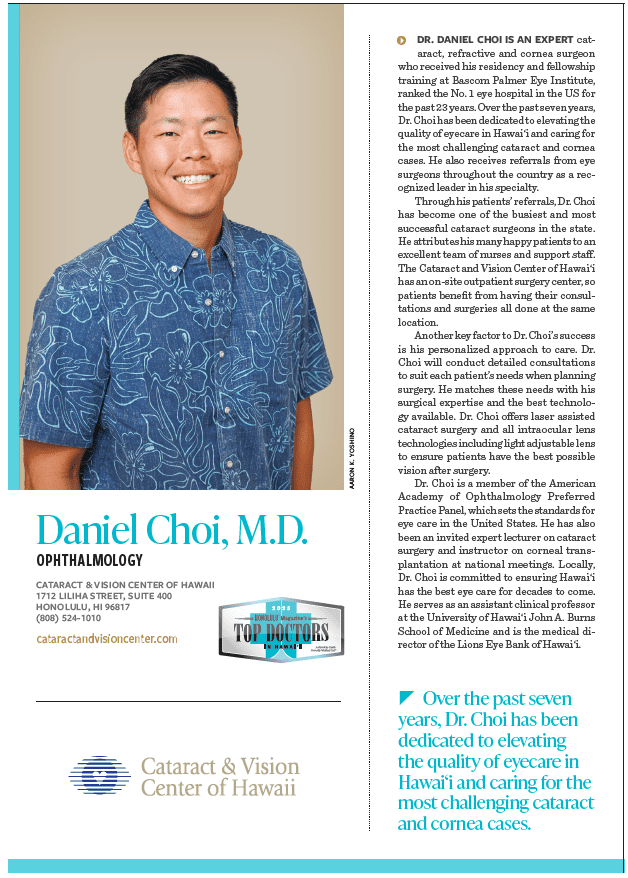
Corneal Transplant: DMEK

 What is DMEK?
What is DMEK?
Descemet's membrane endothelial keratoplasty (DMEK) is the best option to replace the inner lining of the cornea for patients who suffer from decreased vision as a result of corneal edema (swelling). We often see this problem in patients diagnosed with Fuchs' Dystrophy or those who have persistent corneal swelling after other eye surgeries.
Dr. Daniel Choi performs the outpatient surgery in our attached on-site surgical center. Patients go home the same day after surgery. Surgeries typically take 25 minutes with an additional hour of observation afterwards. The surgery involves Dr. Daniel Choi replacing the innermost layer of the cornea. The innermost layer has special cells called endothelial cells whose job is to keep the rest of the cornea clear. If those cells do not work properly, the cornea swells and vision is decreased. By replacing lost or poorly functioning endothelial cells with new ones from a donor cornea patients can improve their vision. This delicate procedure has become the gold standard for corneal transplantation in Fuchs Dystrophy and other corneal conditions with endothelial dysfunction.
What are other options?
Prior to DMEK, a slightly thicker transplant called DSAEK was performed. In DSAEK a slightly thicker portion of the DSAEK was also transplanted as it made it easier for the transplant to position into the recipient's eye. However, with advanced techniques Dr. Choi often opts for DMEK because of it's advantages. DMEK has a lower rate of rejection of the transplanted tissue and usually better vision compared to a DSAEK procedure. However, in eyes with very complex anatomy or have experienced multiple prior surgeries DSAEK remains a great option for visual recovery.
What is the experience like?
Patients undering DMEK surgery receive sedation and anesthesia so there is no pain throughout the procedure. During the surgery, a special gas bubble is placed into the eye to allow the DMEK tissue to properly attach to the patient's inner cornea.
During the first 24 hours we recommend lying flat for 50 mins to 10 minutes of sitting up. For days 2 and 3 we recommend lying flat 2 hours for every hour of upright activity. On days 4 and 5, time can be split evenly between flat and upright. DMEK transplants usually clear within the first 1-2 weeks but sometimes may take a few weeks longer. Patients are on eye drops to protect the transplant after surgery and may be on a single eye drop long term to ensure the transplant continues to function well years down the road.
You Might Also Enjoy...


Dr. Daniel Choi listed in Honolulu Magazine Top Doctor Edition 2024

Light Adjustable Lens

Dr. Daniel Choi setting the standard of eyecare.

Expert Insights from Dr. Daniel Choi

